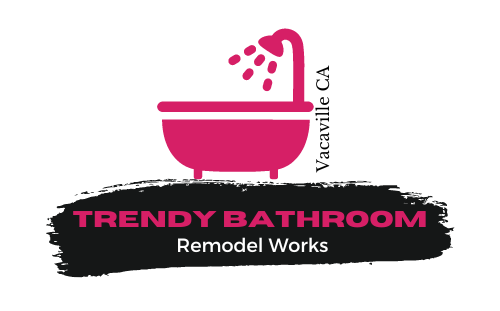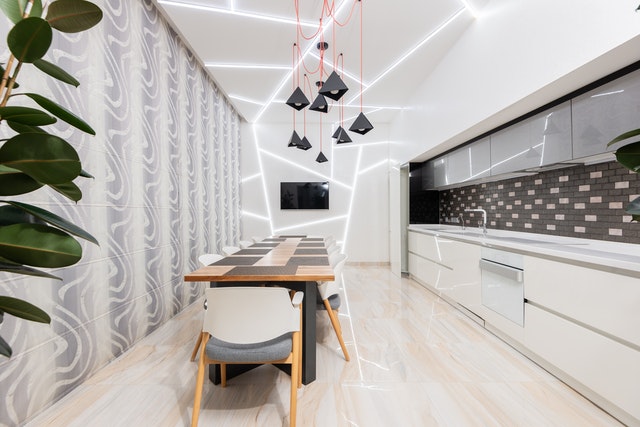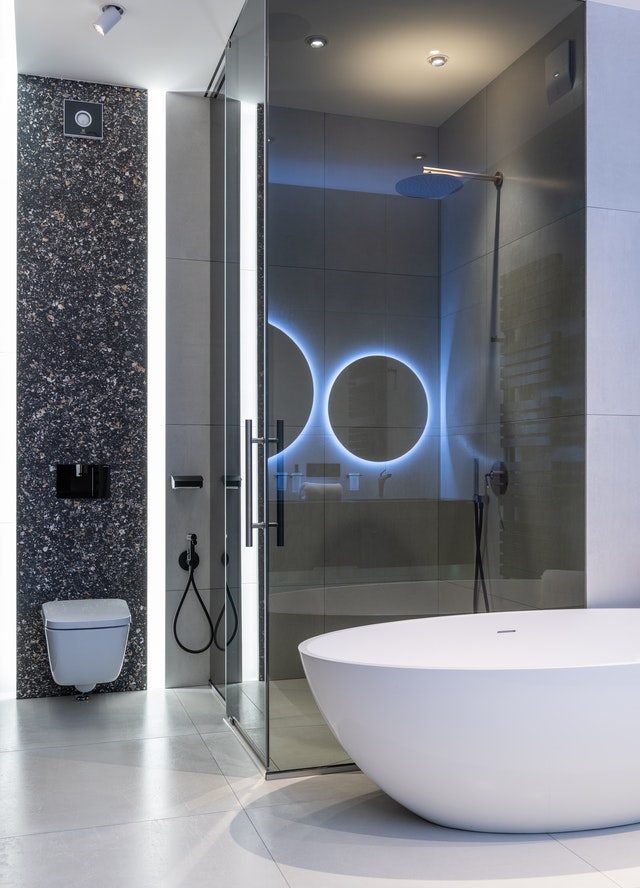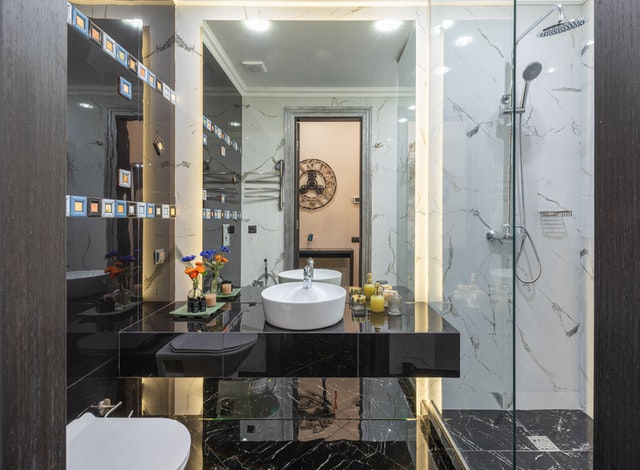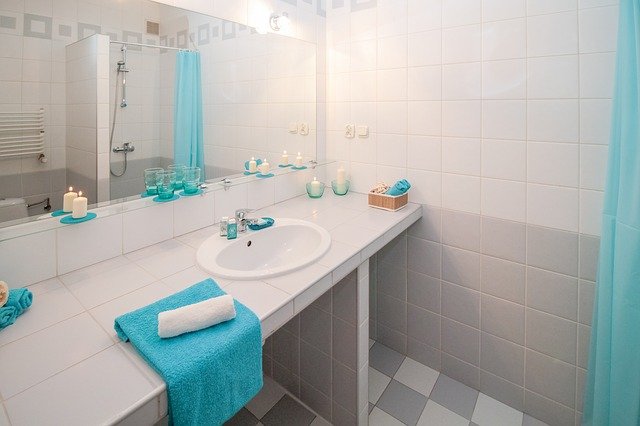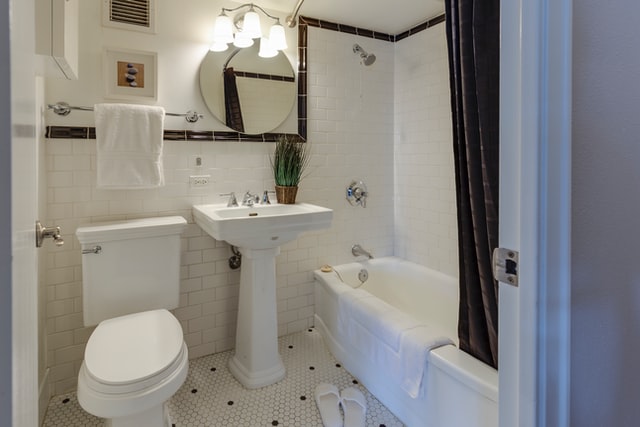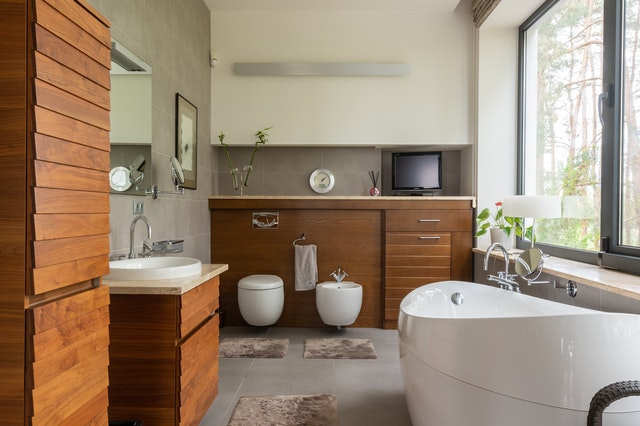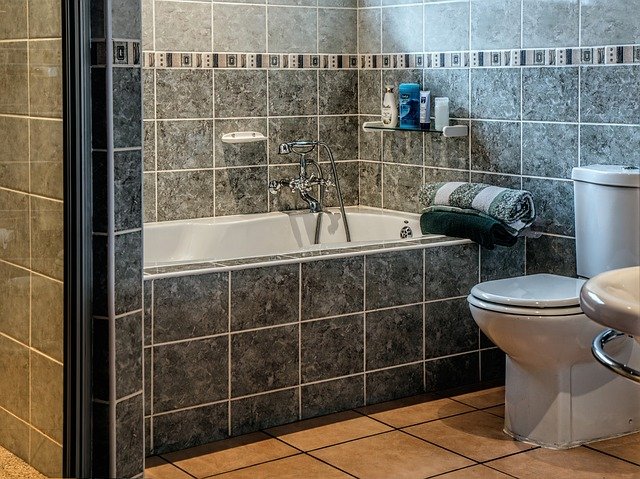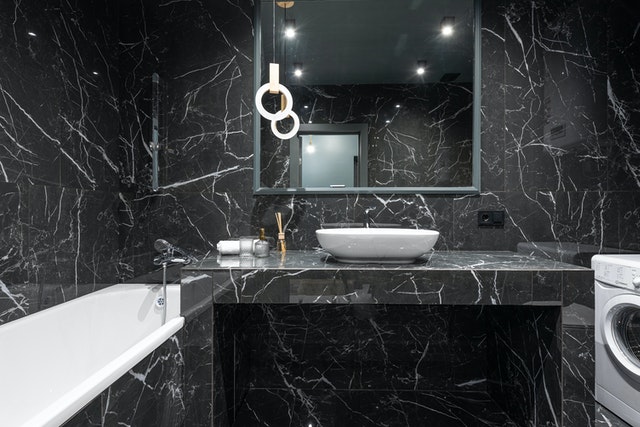Cabinets and Countertops
Cabinets and Countertops
Overview
They say kitchens and bathrooms sell houses and given that cabinetry and countertops are the centerpiece of kitchens and bathrooms, it’s safe to say that cabinetry and countertops sell houses. While you probably don’t need high-end custom cabinets to get your house sold (unless you’re selling high-end custom houses, of course), choosing a good-looking but cost-efficient cabinet will help your property stand out without breaking the budget.
Here are some basics you should understand when choosing cabinets for your rehabs:
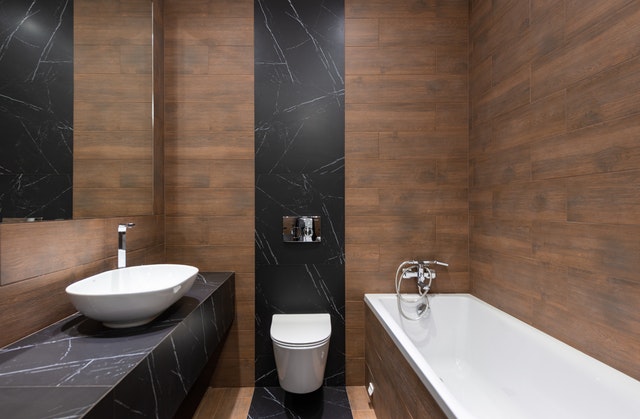
Stock, Semi-Stock, and Custom
These are the three levels of cabinetry.
Stock cabinets are the most cost-efficient and can generally be bought off the shelf from big-box stores and cabinet suppliers. The big downside to stock cabinets is that you’ll have a limited choice of color, wood, and style.
Semi-stock cabinets are a step up. They generally have a week or two lead time, but offer more variety in color and wood choices, as well as upgrades like pull-out shelves and quiet-close drawers.
Custom cabinets are the most expensive, as they are hand-built to your kitchen’s specifications, including non-standard spaces and non-standard sizes.
Framed or Frameless
Framed cabinets are what you see in most houses. They consist of a cabinet box plus hinged doors that attach to the frame. Frameless cabinets have no ”box”, but instead have thick side panels for stability; the doors attach directly to the side panels.
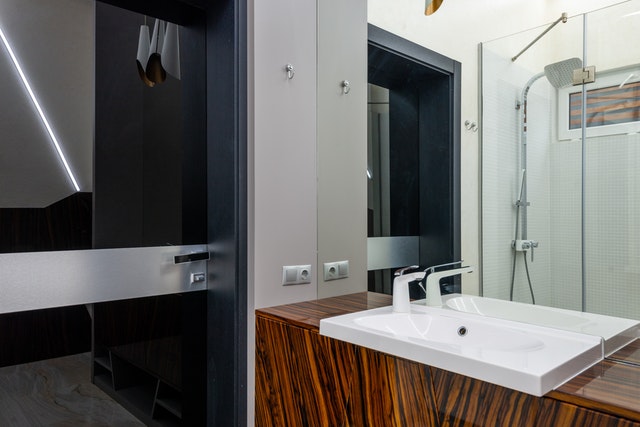
Particleboard, Mdf, and Plywood
These are the three most common types of construction material used in cabinetry.
Particleboard is the lowest-quality material, made of wood shavings compressed into sheets. It is typically used in stock cabinets.
Medium-density fiberboard (MDF) is an engineer wood, is very dense, and is generally used in mid-range cabinetry.
Plywood is most commonly used in higher-end and custom cabinetry, as it is stronger and less prone to warping than the other materials.
Laminate and Wood Veneer
On top of the base cabinet construction material is an exterior material that gives the cabinet its look and feel. Laminates are the “plastic-y” feeling coatings used in lower-end cabinets; these coatings often peel or chip and are difficult to repair. Wood veneers are common, with typical wood species including oak, cherry, and maple in a variety of colors.
For typical low-to medium-end rehabs, I will typically use a framed, semi-stock cabinet made of MDF with a wood veneer. These are often available through local cabinet suppliers or special order through big-box stores and provide a great tradeoff in terms of affordability and visual appeal. Additionally, most semi-stock cabinets can be matched to bathroom vanities, which will ensure that your kitchen and bathrooms have a nice flow and common appearance.
For countertops, you have several choices, with the most common being laminate and granite.
Laminate
Laminate is probably the most cost-effective countertop material. Made of particleboard with layers of bonded plastic adhered to the top, you can find laminate in hundreds of colors and styles, including both matte and gloss finishes.
While laminate is inexpensive, it isn’t nearly as durable as higher-end countertops and is prone to scratching and burning.
Granite
Granite is the most common higher-end counter-top material is made of real stone-namely, granite. It comes in a range of colors, is scratch and heat resistant, and can give a kitchen a big “wow” factor. That said, granite is a good bit more expensive than laminate, and generally takes much longer to fabricate and install.
Personally, for my low-end rehabs, I use laminate countertops with a specific color and high-gloss finish that makes it look like granite. This is appealing to my lower-end buyers, but don’t be fooled-the countertops may begin to show signs of wear within a few years. For my mid-level rehabs and above, I use granite. This adds quite a bit to the price, and also adds to the schedule, but in my area, it’s a must-have in any property over $200,000. For my lower-end rehabs where I just want a bit of an advantage over the competition, I’ll upgrade to granite countertops in the kitchen but use laminate countertops for the bathroom vanities. This saves some money but still gives a nice “wow” factor in the kitchen.
There are several other mid-grade countertop materials, including solid surface countertops and Corian countertops; but in my opinion, if you’re going to use either of these, it’s worth a little bit extra for the granite.
Which type of cabinets and countertops you use will be highly dependent on your area and your competition. I recommend that you don’t try to skimp when it comes to cabinets and countertops, as they will make a big difference when trying to sell your house.
Inspection Tips
When inspecting cabinets and countertops, you should simply be considering the aesthetics and the functionality. In terms of aesthetics, you need to determine if the existing cabinets match the look and feel of the renovation. Is the style consistent with the rest of the finishes? Is the color appealing? Are the cabinets damaged or degrading?
Likewise with countertops-does the countertop material complement the rest of the finishes in the kitchen and the house? If you use mid to high-end finishes in the rest of the house, you probably don’t want to keep the laminate countertops in the kitchen or bathrooms.
In terms of functionally, you should operate every door and drawer to ensure they are hinged correctly and there are no major problems that would be difficult to correct or repair.
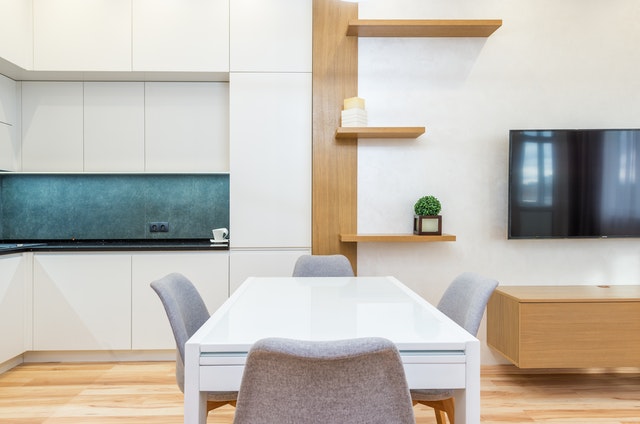
Life Expectancy
The life expectancy of cabinets and countertops is as follows:
· Cabinets: 15-25 years.
· Countertops:
· Laminate: 10-15 years.
· Granite: 25+years.
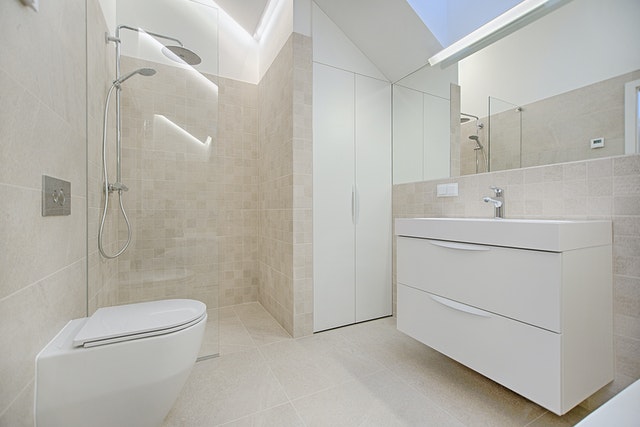
Scope of Work (SOW) Tasks
Here are the SOW tasks associated with cabinets and countertops:
Install Kitchen Cabinets
I highly recommend finding a local cabinet supplier who is accustomed to working with investors. Most suppliers have access to low-end semi-stock cabinet lines that are perfect for lower-end rehab houses-they look and feel high-end but are still inexpensive.
For kitchen cabinet installation, you can either have a professional cabinet installer (usually associated with the cabinet supplier) do the work, or you can have your carpenter do the installing. A professional installer will usually be more cost-effective and will generally be able to complete the job much more quickly. The benefit of using your carpenter is that if the installation is complicated, and any other kitchen changes need to be made to accommodate the cabinets, your carpenter can do those as well.
Install Bathroom Vanities
I typically have my kitchen cabinet supplier provide matching bathroom vanities and allow the installer to install those. If for some reason I can’t get matching vanities, the big box stores generally have decent all-in-one vanities for a very reasonable price that can be installed by our carpenter or handyman.
Install Countertops
When I use laminate tops, I will typically have my cabinet supplier order and install the tops along with the cabinets- he has the ability to get the laminate tops at a standard price. But for granite tops, I’ll shop around, as you can typically find a granite supplier who is accustomed to working with investors who can beat most retail prices by quite a bit. For granite countertops, measuring and fabrication will need to be done after the cabinets are installed, and fabrication and installation will generally take one to two weeks. So, except granite installation to add your schedule a bit. Also, except the granite supplier to provide and mount the undermount sink as part of the installation.
Cost Guidelines
Here is what you should except to pay for cabinet and countertop tasks:
Install Kitchen Cabinets
Labor: $40-$60 per linear foot.
Materials: $100-$250 per linear foot.
The linear foot measurement presumes a mix of both upper and lower cabinets, as well as room for appliances (fridge, range, dishwasher). If you’re only buying base cabinets or wall cabinets, and not both, the price will tend towards the low end of this range. If you’re using both base and wall cabinets for the entire linear footage, the price will tend towards the upper end of this range.
The lower end of the material price is typical for the look cabinets from the big-box stores, while the higher-end price is for nicer semi-stock stock cabinets. I typically pay right in the middle at about $150 per linear foot for decent semi-stock cabinets.
Install Bathroom Vanities
Labor: $75-$100 per vanity.
Materials: $100-$400 per vanity.
Prices are based on typical cabinetry available at big-box stores and discount furniture and will range based on the type of cabinet (semi-custom or off-the-shelf) and size of cabinet (24”-60” are standard).
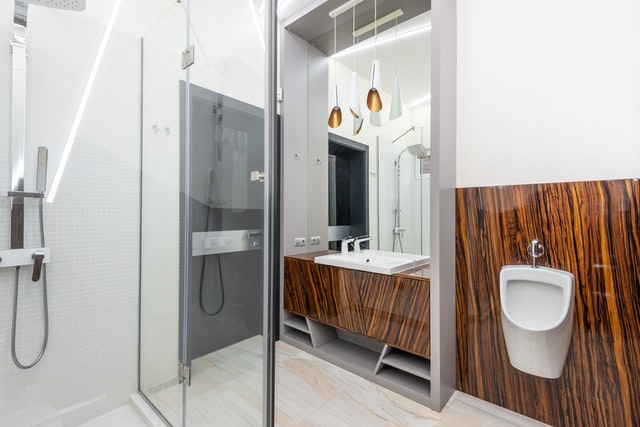
Install Countertops
Laminate: $18-$25 per linear foot.
Granite: $35-$50 per square foot.
As you can see, the range of granite prices is much larger than the range for laminate. This is because the price of granite depends on how common the coloring is. Other colors are less common, and therefore more expensive. The granite cost will often include all the holes cut out, plus undermount sinks, though some suppliers will charge extra for these-anywhere from $65 to $150 for cut-outs and sinks.
Determining Your Local Prices
It’s easy to walk into your local big-box store and see what the prices are for their pre-assembled stock cabinets. For semi-stock cabinetry, start calling around to various cabinet suppliers in your city and ask if they have a line of semi-stock cabinetry they would recommend for a residential renovation. Cabinets are one area where having a good network of investors can be very helpful. In my experience, successful investors tend to know one or two cabinet suppliers who would otherwise be difficult to find.
As for granite prices, you’ll need to decide what colors you prefer, and once you have some colors in mind you can start calling around to different granite suppliers in your area. This is another area where most successful investors will have a go-to professional who provides great pricing.
How to Pay For the Job
If you purchase from a big-box store, you’ll pay for the cabinets when you purchase and then pay for installation after they are installed. If you purchase through a supplier who will be doing the installation, you may be required to pay upfront for the cabinets at the time they are ordered, and then pay for installation when the installer completes the job. If you have a good relationship with your cabinet supplier, you can generally negotiate to pay when the cabinets are delivered, as that’s when the supplier normally pays for them.
